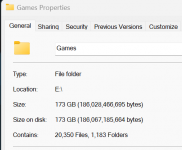Main reason it makes a difference is that the CPU is operating on the scale of nanoseconds, relative to main memory. So faster sustained rates and/or lower access latency both help in their own ways, if a particular application is regularly reaching back to non-volatile storage.
Lets take 3 theoretical drives, using flash latencies from a google search of "Flash Read Latency".
Drive 1: Gen 3 drive of entirely low latency 3d SLC. 8 microsecond (us) read latency, 4,000MB /sec max transfer
Drive 2: Gen 4 drive of entirely 3d TLC. 75us read latency. 7,5000MB /sec max transfer
Drive 2: Gen 5 drive of entirely 3d QLC. 125us read latency. 12,000MB /sec max transfer
For a 4k file the drives will complete the operation in:
Drive 1: 108 us (8us latency, 100us transfer)
Drive 2: 128 us (75us latency, 53us transfer
Drive 3: 158us (125us latency, 33us transfer)
for a 1MB file:
Drive 1: 258 us (8us latency, 250us transfer)
Drive 2: 208 us (75us latency, 133us transfer
Drive 3: 208us (125us latency, 83us transfer)
For a 10MB file
Drive 1: 2508 us (8us latency, 2500us transfer)
Drive 2: 1408 us (75us latency, 1333us transfer
Drive 3: 958us (125us latency, 833us transfer)
If we're dealing with mostly 4k files, we'd prefer the the Gen 3 drive.
If we're dealing with files >700k<=1MB or smaller, we'd prefer the Gen 4 drive (or maybe even the Gen 3 if we had some 4k files in there)
If we're dealing with files >1mb, we'd prefer the Gen 5 drive.
Now, back in the day of Anadtech's SSD articles (2009 ish), a huge portion of day to day usage was 4kb, especially for OS drives. If that's the case, and you cared about performance over space, you'd take the lower latency flash over the new generation of PCIE drives every day.

